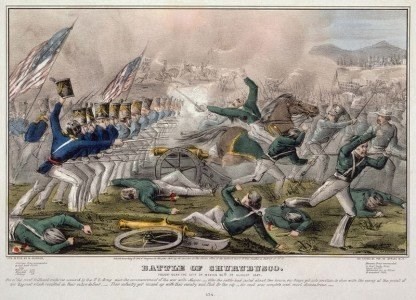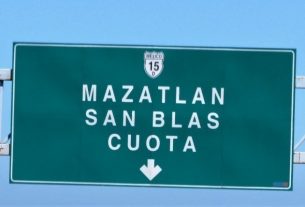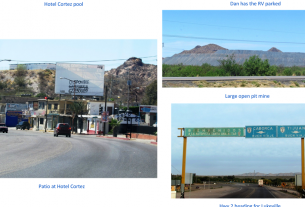By Manzanillo Sun Writer the April 2019 Edition
Mid-May marks two key anniversaries in the conflict between the United States and Mexico that set in motion the Civil War and led to California, Texas, and eight other states joining the Union.
On May 13, 1846, the United States Congress declared war on Mexico after a request from President James K. Polk. Then, on May 26, 1848, both sides ratified the peace treaty that ended the conflict.
In between those dates was enough drama to last for generations and the appearance of some familiar names that would dominate the Civil War, from President Abraham Lincoln to General Robert E. Lee.

To save space and make a long story short, the conflict centered on the independent Republic of Texas, which opted to join the United States after establishing its independence from Mexico a decade earlier.
The new U.S. president, James K. Polk, also wanted Texas as part of the United States, and his predecessor, John Tyler, had a late change of heart and started the admission process be-fore he left office. Polk and others saw the acquisition of Texas, California, Oregon, and other territories as part of the nation’s Manifest Destiny to spread democracy over the continent.
The U.S. also tried to buy Texas and what was called “Mexican California” from Mexico, which was seen as an insult in Mexico, before war broke out.
Mexico considered the annexation of Texas as an act of war, and after border skirmishes, President Polk asked for the war declaration, since in Article I, Section 8of the Constitution, only Congress can declare a war.
In the fighting that followed, the mostly volunteer United States military secured control of Mexico after a series of battles, and the Treaty of Guadalupe Hidalgo was signed on February 2, 1848.
It was the first large-scale success of a United States military force on foreign soil.
Mexico received a little more than $18 million in compensation from the United States as part of the treaty.
The pact set a border between Texas and Mexico, and ceded California, Nevada, Utah, New Mexico, most of Arizona and Colorado, and parts of Oklahoma, Kansas, and Wyoming to the United States.
In today’s terms, those 10 states account for 136 electoral votes, more than half of the votes needed to secure a win a presidential election.
It also cut the territorial size of Mexico in half.
On the surface, the war’s outcome seemed like a bonanza for the United States. But the acquisition of so much territory with the issue of slavery unresolved lit the fuse that set off the Civil War in 1861.
The underlying issue of how adding new states and territories would alter the balance between free and slave states was critical.
The Missouri Compromise of 1850 attempted to appease Southern concerns about the shifting balances, but the die was cast as the nation headed toward the Civil War in 1861.
The Treaty of Guadalupe Hidalgo also set in motion a whole range of issues for Mexican-Americans and Native Americans.During the conflict, one of the vocal objectors in the Whig par-ty was Representative Abraham Lincoln from Illinois. Key players on the political side included Jefferson Davis and Stephen Douglas.
On the battlefield, Robert E. Lee, Ulysses S. Grant, and Stone-wall Jackson were among the dozens of commanders who would later emerge in the Civil War.
The full edition or view it online
Manzanillo Sun’s eMagazine written by local authors about living in Manzanillo and Mexico, since 2009



